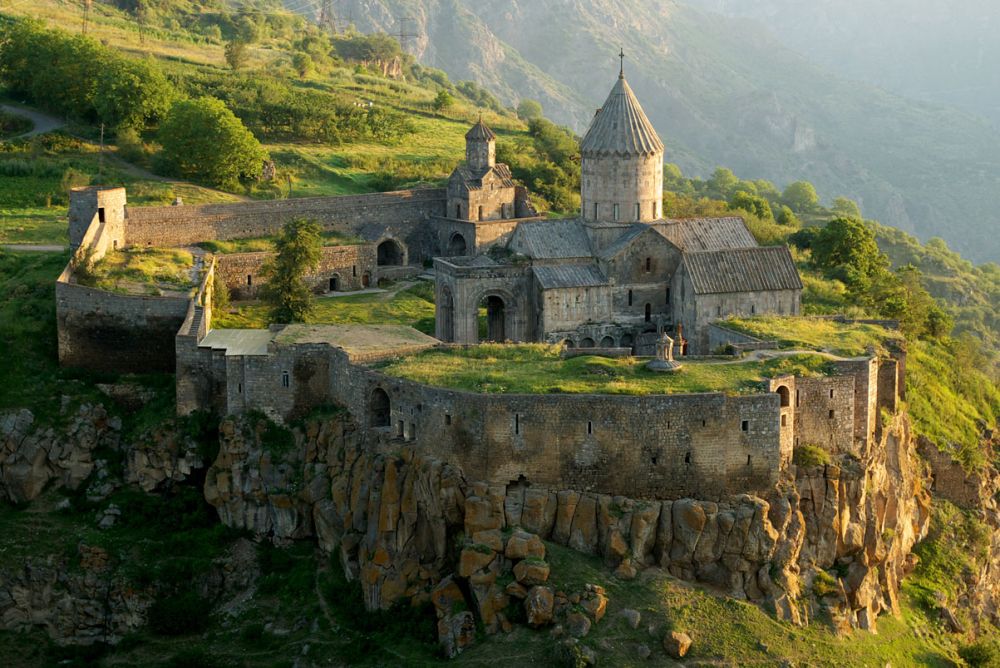

Tatev Monastery, one of Armenia’s most significant religious and cultural landmarks, has a history that intertwines deeply with the evolution of Armenian tourism. The monastery is situated near the town of Kapan, in the Syunik Province of southeastern Armenia, on a plateau overlooking the Vorotan River Gorge. Its construction dates back to the 9th century, serving not only as a religious site but also as a prominent educational and intellectual center with a university founded there in the 14th century.
Tourism in the area began to develop notably with Armenia's push for independence and the subsequent growth in Armenian heritage consciousness in the late 20th century. As Armenia transitioned into a free-market economy, the significance of tourist sites like Tatev became more pronounced, both for domestic visitors and the growing number of foreign tourists seeking to explore Armenia's rich historical tapestry.
The turn of the 21st century witnessed a substantial increase in efforts to revitalize Tatev Monastery, aimed at preserving its historical authenticity while making it more accessible and appealing to visitors. Restoration campaigns have been undertaken to maintain the integrity of the monastery's stunning medieval architecture and the surrounding natural landscape.
A pivotal development in the history of tourism at Tatev Monastery came with the inauguration of the "Wings of Tatev” in 2010. Holding the record as the longest reversible aerial tramway in the world, this cable car spans 5.7 kilometers (over 3.5 miles) and offers breathtaking views of the Vorotan Gorge. This incredible engineering feat has not only made the monastery more accessible but also turned the journey into a thrilling attraction itself, drawing even more visitors to the site.
Recent trends in tourism at Tatev Monastery emphasize sustainable practices and community involvement. Touristic initiatives now often seek to engage local residents in providing hospitality services such as homestays, traditional culinary experiences, and artisanal crafts, which benefits the local economy and ensures a more authentic experience for visitors.
In modern times, Tateve Monastery's remarkable cultural and historical value has attained broader international recognition. It has become a must-visit destination for those interested in medieval architecture, Christian history, and the stunning landscapes of the South Caucasus. Harnessing digital media and online platforms, the site’s promotion has reached audiences worldwide, showcasing the serene beauty and spiritual significance of this Armenian gem.